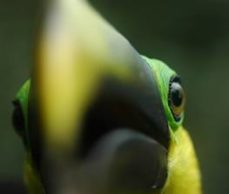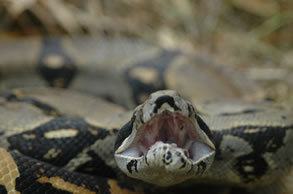Overview
The Center for Tropical Research conducts cutting edge research in the Amazon and the Andes to complement our primary focus on the Chocó. In these projects, CTR combines the highest quality scientific research with local outreach to achieve conservation goals. Below, is an overview of our projects.
The Amazon Basin
The Amazon Basin exemplifies the problems, challenges and potential benefits of the conservation movement. The Amazon is the largest and best-known center of biodiversity on the planet, but its forests are being lost at unsustainably high rates. CTR has been active in the Ecuadorian Amazon since the mid-1990s. In the past decade, we have designed and implemented a number of research projects with concrete benefits for conservation in the region.
Basic Biology and Conservation of Macaws. Macaws are perhaps the best known and most recognized animal from the Amazonian rainforest. Their bright colors and raucous calls leave a lasting impression on anyone lucky enough to have experienced them in the wild. Ironically, despite the high profile of these animals, very little of the basic biology of macaws in the wild is known. What is known, however, is that many species of macaw are suffering dangerous population declines and are internationally recognized as endangered or threatened.
CTR has been working in collaboration with Universidad San Francisco de Quito and Wildlife Conservation Society since 2001 on the conservation and basic biology of macaws in the Ecuadorian Amazon. We have documented the abundance and diversity of five macaw species for a full year and have found seasonal variation in abundance of most species (Karubian et al 2005). This suggests that large-scale movements may be an important aspect of macaw biology. Our next step is to place satellite transmitters on 10 adult Scarlet Macaws, which would allow the first accurate documentation of their seasonal movements.
Amazonian Pastures. CTR has written a collaborative project proposal with sociologist Dr. Thomas Rudell from Rutgers University to study the effects of pasture management on avian diversity and seed dispersal. Dr. Rudell has over two decades of experience working with communities in the Ecuadorian Amazon. In the Amazon, variable pasture management practices have resulted in a range of different pasture types, from pastures completely lacking trees to pastures with up to 30% canopy cover from trees. These trees can be remnants of the original forest which were not cut when the pasture was initially cleared, or they can be relatively young trees which have been allowed to grow on the pasture in recent years. CTR has combined forces with Dr. Rudell to launch a multidisciplinary investigation into the social and economic causes underlying these different methods of pasture management and the effects that they have on avian abundance and diversity.
In this project, one hundred households will be interviewed about their pasture management practices, and the history of their pastures. Parallel with these interviews, pastures will be mapped and tree cover will be quantified. Working with local community members and university students, as well as with the Ecuadorian NGO, Fundacion Jatun Sacha, we will quantify avian diversity and nesting biology in these 100 pastures for one full year. This multidisciplinary study will further our understanding of the causes and consequences of different methods of pasture management. Our long-term goal is to identify which pasture management techniques support the highest levels of diversity, and to develop a certification process by which cattle production employing these methods can be sold under an “Environmentally Friendly” label.
Effects of Habitat Fragmentation on Biodiversity. The processes that generate and sustain biodiversity are highly structured spatially and depend on the distribution of both biotic and abiotic environmental variables. While the general spatial patterns of these processes can potentially be understood, their dynamic nature and response to rapid changes of environment are still unclear. Predictive models of species distribution and diversity that combine biological, spatial, and temporally dynamic environmental data are important in quantifying patterns and processes of diversity.
In collaboration with Dr. Sassan Saatchi, from the NASA/Jet Propulsion Laboratory, CTR is working to develop a model that can integrate biological point locality and process data (e.g., genetic and morphological information and estimates of connectivity among populations) with remotely sensed environmental parameters to quantify patterns of species range and diversity in tropical regions. We propose to test and perform comparative analysis of this model using plants (tree species) and a wide taxonomic representation of vertebrate species (including species of birds, primates, and frogs) over two distinct tropical regions with pronounced environmental gradients: the western Amazonian region of South America (including the eastern slopes of the Andes), and the forest-savanna ecotones of Central Africa.


Left: Chocó Toucan; Right: Boa constrictor
The Andes
A Scientific Approach to Reforestation. Rainforest restoration – the process by which logged forest is restored to an ecologically viable state – has proceeded in a haphazard manner with little attention to experimental design or general applicability of findings. Thus, despite the growing need for and interest in restoration, little is presently known about “what works.” CTR is working in Ecuador to study and develop new approaches to restoration. Our objectives are to preserve and restore rainforest habitat in areas of critical importance for biodiversity and human populations. We believe that the development of a scientifically-tested reforestation methodology now, before most large-scale reforestation projects have been implemented, will have large economic and conservation returns in the future. Additionally, we will employ native tree species with timber value where possible, to maximize economic as well as ecological returns of the project.
Our general approach is to document the ecological patterns and processes of the natural process of regeneration, and then combine this knowledge with scientifically rigorous tests of alternative approaches to habitat restoration over a four-to-eight-year time span. Our experimental design is based on a randomized block design, in which different “treatments”, such as tree density, species mix, and removal of non-target species, are randomly combined in different one-hectare blocks and the outcome is monitored. This design will provide a scientifically sound approach for the restoration of tropical forests, applicable throughout the Neotropics. It will also enhance and maintain corridors linking established reserves of critical importance for conservation of biodiversity. Finally, the project will foster international collaboration between academic and NGO communities, as well as training of Ecuadorian and U.S. biologists.
Our goal is to conduct multiple replicates of this basic experimental design in these and other habitats, both to increase applicability of findings to future reforestation efforts, and because of the positive impact for conservation of biodiversity that each project will have. We are currently developing projects based on the model in the Galapagos Islands (with Fundacion Jatun Sacha and Universidad San Francisco de Quito); the eastern slope of the Andes (with The Nature Conservancy and Ecociencia); and the Chocó coastal forests of northwestern Ecuador (with Fundacion Jatun Sacha).
Processes Which Generate and Maintain Diversity. The objective of this collaborative project is to analyze population genetic, phenotypic, and phylogenetic patterns in several vertebrate taxa to identify evolutionary processes that generate biodiversity in tropical forests. Our ultimate goal is to provide the information necessary to conserve regions important in generating and sustaining biodiversity in the Ecuador.
To obtain these data, CTR researchers have sampled birds, bats, small mammals, and herpetofauna from several localities on both sides of the Andes and conducted genetic analyses of these samples to test hypotheses of how the Andes have contributed to the outstanding levels of diversity we see today in Ecuador. Findings suggest that a combination of isolation by uplifting of the Andes, in conjunction with increased ecological transitions from lowland to highland forests, have played an important role in generating phenotypic and ecological diversity among populations and, potentially, new species. These findings have been published in a number of peer-reviewed scientific journals, and this research project has directly trained several Ecuadorian university students who are currently studying for advanced degrees at universities in the United States.

